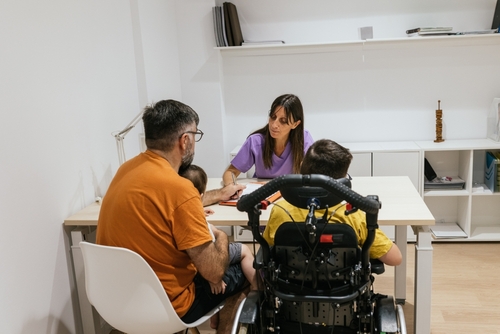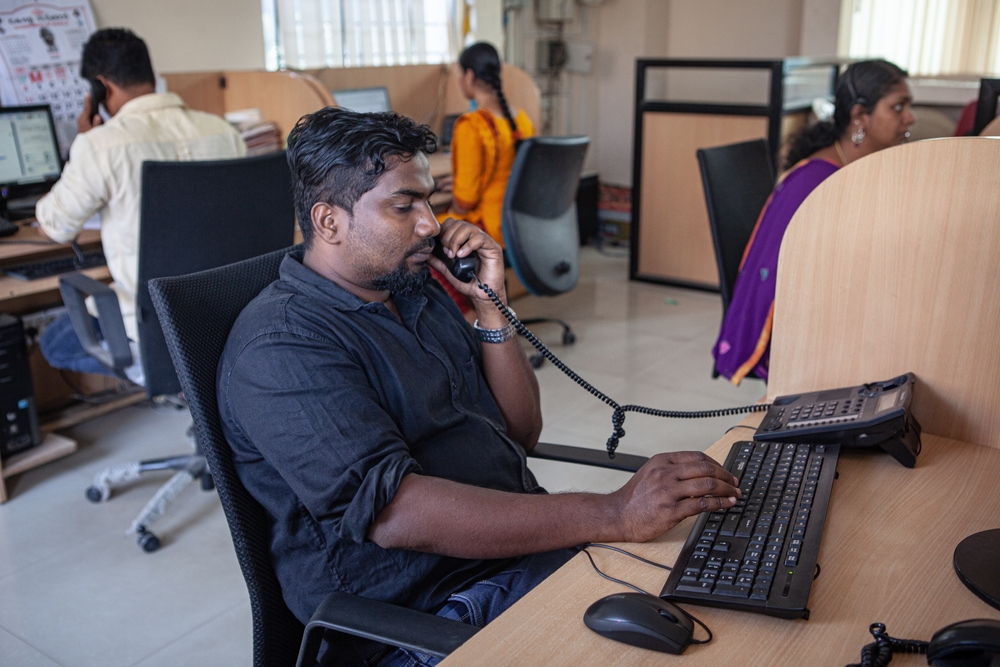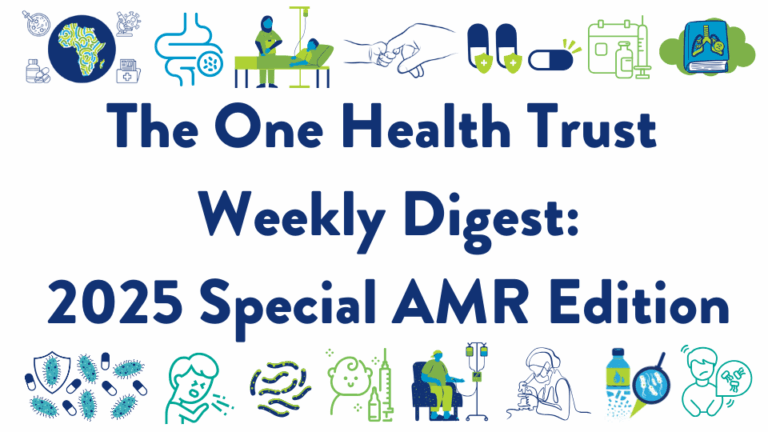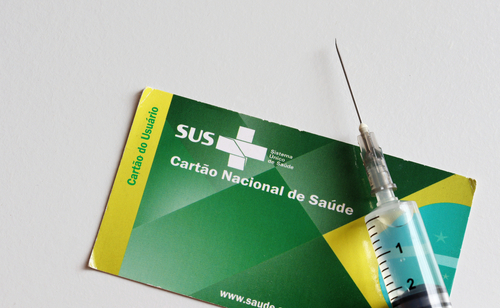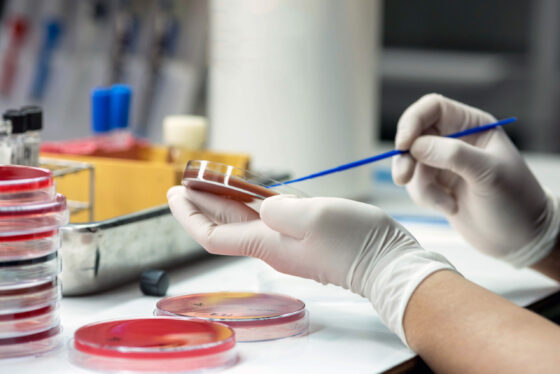March 30, 2021

Addressing AMR during the COVID-19 pandemic requires an internationally coordinated approach. CDDEP researchers and experts from various international institutions and organizations reviewed the evidence on the impact that the COVID-19 pandemic has had on antimicrobial resistance (AMR) and provided recommendations for interventions that would address AMR, even under resource constraint settings. Evidence points at excessive antibiotic use in hospitals which exceeds the incidence of bacterial co-infections and secondary infections. However, the full scale of this impact is unknown as re-direction of resources led to disruption of AMR surveillance and research, particularly in low resource settings. Recommendations included continuous surveillance and stewardship activities, creation of international networks for data sharing, improved communication at the community and decision-making level, and, importantly, keeping AMR high on the political agenda. [Trans R Soc Trop Med Hyg]
Transparency during vaccine emergency use authorization can reduce vaccine hesitancy. A survey of over 16,000 healthcare workers (HCWs) in the United States assessing their intentions to receive the COVID-19 vaccine, revealed a shift in opinion between December 4th, 2020, and February 18th, 2021. Overall, patient-facing employees were more likely than non–patient-facing employees to intend to receive a vaccine (82.3% vs. 69.8%; P < .001). As the independent FDA advisory committee issued the first emergency use authorization of the vaccine, the number of respondents willing to get the vaccine increased from 55.3% to 80.2%, indicating that transparency during these processes led to an increase in the intention to receive a vaccine among HCWs. [JAMA]
Health-care delays in tuberculosis diagnosis and treatment in the United States exceed WHO recommendations. As healthcare providers in low-incidence settings are becoming less familiar with tuberculosis (TB), a retrospective observational cohort study using private insurance claims data provided by Aetna, Connecticut, assessed health-care delays in TB diagnosis in the United States between 2008 and 2016. Among the confirmed 738 active tuberculosis cases, the median health-care delay of 24 days (IQR 10–45) exceeded that recommended by the WHO (21 days). Additionally, longer delays were associated with older age (8.4% per 10-year increase, 95% CI 4.0 to 13.1) and non-HIV immunosuppression (19.2%, 15.1 to 60.0). [Lancet]
SARS-CoV-2 vaccination program associated with positive monetary and health value. Researchers at the London School of Hygiene and Tropical Medicine used an age-structured dynamic transmission and economic model to explore different scenarios of U.K. mass immunization programs over ten years. In the best-case scenario simulation with 95% vaccine efficacy and 3-year protection, vaccination minimized community transmission without future periods of increased physical distancing. In the worst-case scenario with 50% vaccine efficacy and 45-week protection, the SARS-CoV-2 became endemic with biannual epidemics. Vaccination was found to offer overall benefits in all scenarios, given the large health and economic costs of COVID-19, with incremental net monetary values ranging from £12.0 billion to £334.7 billion in the best-case scenario and from – £1.1 billion to £56.9 billion in the worst-case scenario. [The Lancet]
Older people at a higher risk of SARS-CoV-2 reinfection in Denmark. Researchers in Denmark conducted a population-based observational study to compare infection rates during the first and second surges of the COVID-19 epidemic: from March to May 2020 and from September 1st to December 31st, respectively. The findings revealed a 0.65% positivity rate among previously PCR-positive individuals and a 3.27% positivity rate among previously PCR-negative individuals. The 80.5% protection against repeat infection was reduced to 47% for those aged 65 years or older, highlighting the importance of vaccination of previously infected individuals and the need for effective vaccination, enhanced physical distancing, and infection control for the elderly. [The Lancet]
Post-acute COVID-19 syndrome requires comprehensive care beyond hospital discharge. Researchers in the United States conducted a comprehensive review of the pathologies associated with post-acute COVID-19 syndrome, more commonly known as long-haul COVID, and identified symptoms such as coughing, fatigue, cognitive disturbances (brain fog), hair loss, and chronic kidney disease as the main symptoms persisting after the acute phase. The majority of people afflicted with COVID-19 reported at least one symptom of post-acute COVID-19 and at least two months after symptom onset. One study, which took place in Italy and surveyed 143 people who recovered from COVID-19, found that more than half experienced at least three symptoms. The findings from this review emphasize that physical and mental care for patients with COVID-19 needs to extend beyond hospital discharge. [Nat Med]
HPV type 16 decreased among Brazilian women receiving the HPV quadrivalent vaccine. Researchers in Brazil conducted a cross-sectional, multicentric survey between September 2016 and November 2017 to assess the human papillomavirus (HPV) vaccine effectiveness following the introduction of the quadrivalent HPV vaccine in the public immunization program in 2014. The study found that among the 5,945 young Brazilian women surveyed, 11.92% of respondents reported they had received the HPV vaccine. There were no significant differences in the prevalence of sexually transmitted infections or HIV prevalence between vaccinated and unvaccinated groups. However, vaccination was associated with a reduced prevalence of HPV types 6 (2.34% vs. 8.91%, P < 0.01), suggesting that the HPV vaccine can protect against the targeted HPV types. [Vaccine]
Preparations containing β-lactamase inhibitors or carbapenem antibiotics preferred for treatment of neonatal invasive infection by E. coli. Researchers at Xiamen University in China studied the characteristics of the early-onset disease (EOD) (<72 hours after birth) and late-onset disease (LOD) (>72 hours after birth) of Escherichia coli (E. coli) infection in 94 neonates to get a better understanding on the epidemiology and clinical profile of the pathogen. E. coli-EOD was largely attributable to perinatal factors, while E. coli-LOD was related mainly to nosocomial infections. The EOD group (n=46) had higher incidences of diabetes mellitus, perinatal fever, urinary tract infection, and chorioamnionitis. In contrast, the LOD group (n=48) had higher incidences of premature birth, low-birthweight, nosocomial infection, and hospitalization time. [BMC Infectious Diseases]
Optimizing the use of selective antibiotics can mitigate ESBL-EC carriage in calf fattening farms. Researchers at Paris-Saclay University developed 18 agent-based mechanistic models to assess different hypotheses regarding the main drivers of Extended Spectrum β-Lactamase-producing Escherichia coli (ESBL-EC) dynamics in calves. In the absence of antimicrobial usage (AMU), the median carriage duration of ESBL-EC was estimated to be 19.6 days. In the best model, AMU was found to influence ESBL-EC dynamics by affecting ESBL-EC clearance rather than acquisition. Eliminating the use of selective antibiotics on the arrival of calves to the fattening farm had a strong effect on average ESBL-EC prevalence at the time of slaughter (relative reduction of 77.0%), but the effect was mild if AMU was only reduced by 50% compared to baseline (relative reduction of 3.3%). [One Health]
Key quality indicators for appropriate antibiotic use developed using the Delphi procedure. Researchers in the Republic of Korea conducted a systematic literature review to identify quality indicators (QIs) to measure the appropriateness of antibiotic therapy, identify targets for improvement, and evaluate the effects of antibiotic stewardship interventions. Potential indicators were evaluated by a multidisciplinary expert panel and out of 23 identified QIs, six and three (1, 2, and 5) QIs were deemed as key for inpatients and outpatients, respectively: (1) prescribe empirical antibiotic therapy according to existing guidelines, (2) change empirical antibiotics to pathogen-directed therapy, (3) obtain culture samples from suspected infection sites, (4) obtain two blood cultures, (5) adapt antibiotic dosage to renal function, and (6) document antibiotic plan. [BMC – Antimicrobial Resistance & Infection Control]
Fighting antimicrobial resistance requires multisectoral coordination. Increasing attention has been paid to the need for collaborative, multisectoral coordination (MSC) to combat antimicrobial resistance (AMR) globally. In 2018, USAID’s Medicines, Technologies, and Pharmaceutical Services (MTaPS) program began to support MSC-AMR in 11 countries. Desk reviews and scoping visits by MTaPS revealed that although all countries had established One Health platforms and had achieved a political commitment to AMR containment, they struggled to coordinate effectively between MSC-AMR and One Health bodies. In response to these findings, MTaPS set benchmarks and assisted countries in achieving them. Some of the assistance was aimed at finalizing National Action Plans, the development of operational plans, and monitoring and evaluation frameworks. [Journal of Pharmaceutical Policy and Practice]

